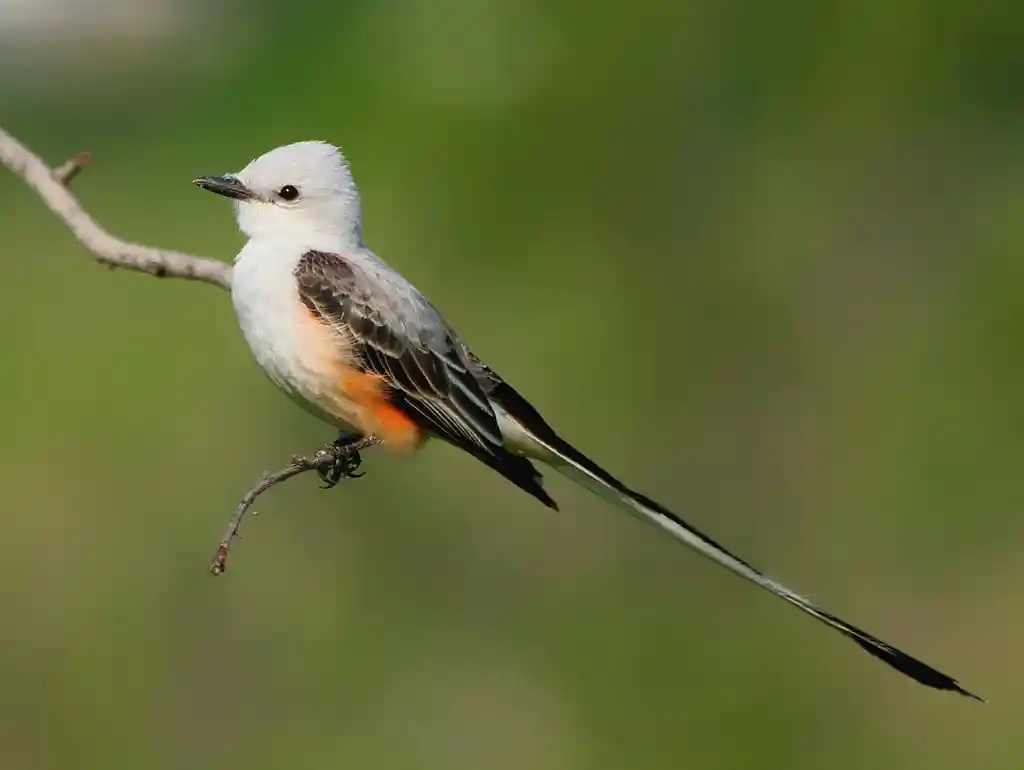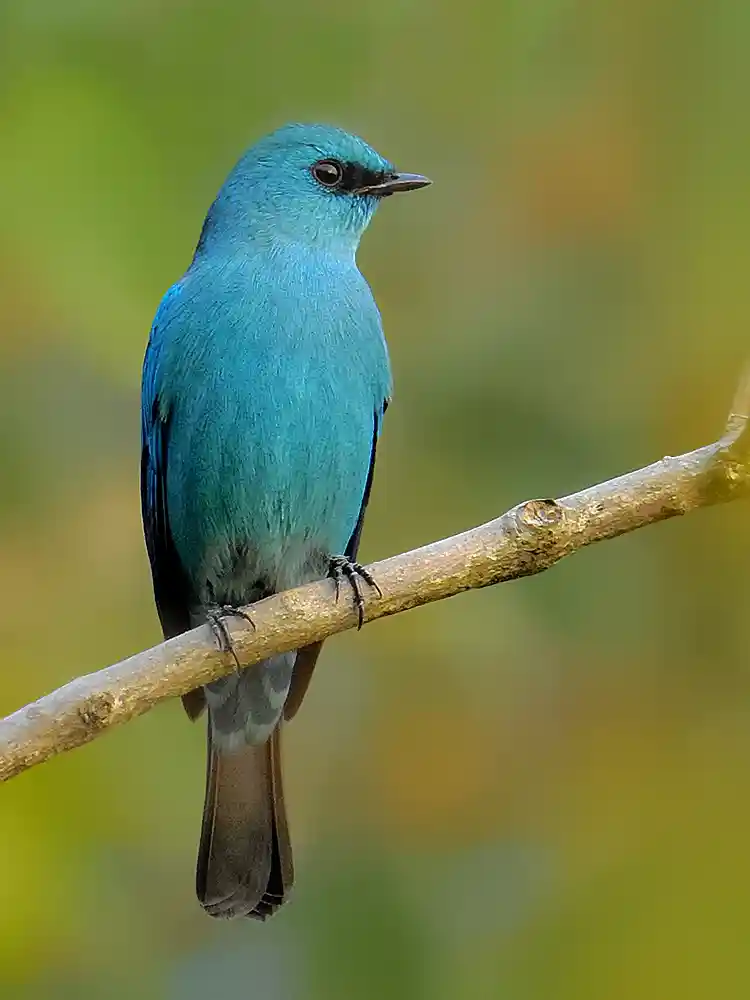
Flycatchers are a diverse group of birds notable for their insect-catching abilities. They belong to different families within the passerine order, primarily Tyrannidae and Muscicapidae. This article explores their taxonomy, identification, behaviors, and the significance of their conservation. Flycatchers play important roles in maintaining ecosystem balance by controlling insect populations. Their unique characteristics make them fascinating subjects for both researchers and birdwatchers.
Taxonomy and classification
The classification system of flycatchers showcases their rich diversity and varied adaptations in different environments. The taxonomy of these birds provides insight into their evolutionary relationships and ecological roles.
Tyrant Flycatchers (Tyrannidae)
The Tyrannidae family encompasses a vast array of flycatchers, primarily found in the Americas. Known as tyrant flycatchers, these birds display significant diversity in terms of size, color, and habitat preference. Their adaptability allows them to thrive in various ecological settings, from forests to open grasslands.
Old World Flycatchers (Muscicapidae)
In contrast to the tyrant flycatchers, the Muscicapidae family includes species predominantly found in Eurasia and Africa. These birds, often referred to as old world flycatchers, exhibit distinct behaviors and characteristics that set them apart from their New World relatives. Their hunting techniques and vocalizations are also quite varied.

Notable species
Within the flycatcher taxonomy, several species stand out due to their unique features and behaviors. Each of these notable species exemplifies the remarkable adaptability and ecological significance of this species.
- Great crested flycatcher: it’s a prominent species in North America, recognized for its distinctive call and striking coloration. It often inhabits various woodland habitats and is a key player in controlling insect populations.
- Scissor-tailed flycatcher: this species is known for its elongated tail, which resembles scissors when in flight. It’s primarily found in open areas, where it showcases its aerial agility while hunting.
- Vermilion flycatcher: with its vibrant red plumage, it’s easily recognizable and often seen in sunny habitats such as grasslands and edges of forests. This species prefers warmer climates and is known for its conspicuous mating displays.
- Pacific flycatcher: it’s primarily found along the coastal regions of North America. Its subtle coloration and varied vocalizations make it an intriguing subject for birdwatchers and ornithologists alike.
Characteristics and identification
Understanding the unique features and identification markers of various flycatcher species is essential for birdwatchers and ornithologists alike.
Great crested flycatcher
It is a robust bird measuring between 6.7 and 8.3 inches (17-21 cm) in length. This species is typically recognized for its brownish-gray head and striking yellowish belly. The upper plumage features a vibrant reddish-brown hue, while the tail and wings display a noticeable rufous-orange color. Its large size and prominent markings make it a standout in its environment.
Juveniles possess a more pronounced white edging on their feathers compared to adult birds. As they mature, these markings become less visible. The overall coloration of juveniles also tends to be duller, which aids in their camouflage during the early stages of life.
Scissor-tailed flycatcher
Renowned for its strikingly long, forked tail, this species is about 9-12 inches (23-30 cm) in length, including its tail. Its upper parts are primarily gray, transitioning to a soft white on the belly. The tail feathers extend dramatically, creating a scissor-like appearance in flight. This unique feature serves not only for display but also enhances aerial maneuverability.

Juvenile Scissor-tailed Flycatchers show a more muted color palette and lack the full, elongated tail feathers of adults. As they mature, their plumage becomes brighter, and the tail feathers grow longer and more striking, making adult birds easily identifiable.
Vermilion flycatcher
It is notable for its vivid crimson plumage, particularly in males. Measuring around 6-7 inches (15-18 cm), males exhibit bright red on their heads, throats, and bellies, contrasting with darker wings and tails. Female Vermilion Flycatchers, on the other hand, have a more subdued coloration with light brown and pale yellow underparts, helping them blend into their surroundings.
Juveniles resemble adult females, exhibiting earthy tones that offer camouflage. As they mature, males gradually develop their iconic red feathers, transitioning from a duller juvenile stage to the vibrant hues characteristic of adult males.
Pacific Flycatcher
It is a medium-sized bird, measuring about 6-7 inches (15-18 cm). It features a combination of olive-green and grayish plumage, with a lighter underbelly. The wings are often darker with faint markings that aid in identification when in flight. Its subtle coloration allows it to blend well into its forested habitats.
Juveniles exhibit similar coloring to adults, though they may have slightly less defined markings. Over time, as Pacific Flycatchers mature, their features become more pronounced, making them easier to distinguish from younger birds. Behavioral cues during the breeding season also help differentiate between age classes.
Habitat and behavior
The habitat and behavior of flycatchers are critical for understanding their ecological roles and adaptations. These birds exhibit unique hunting patterns and thrive in various environments. Their vocalizations also play an essential role in communication and territory establishment.
Hunting patterns
Flycatchers are primarily renowned for their remarkable hunting techniques, which allow them to effectively capture prey in mid-air. Understanding these behaviors is key to recognizing their adaptive strategies in different environments.
Many species of this bird are classified as sit-and-wait predators. They select a perch from which they can observe their surroundings, patiently waiting for the perfect opportunity to strike. This method involves:
- Scanning the air for flying insects.
- Launching themselves at high speed to catch prey.
- Returning to the same perch to consume their catch.
Preferred habitats
Flycatchers are adaptable birds that occupy a range of habitats. Their preferences often depend on the specific species and their ecological needs.
Deciduous forests provide an ideal environment for many flycatchers. The presence of tall trees offers perfect perches for hunting. This habitat also supports a diverse array of insects, ensuring a reliable food source for them and other insectivorous birds like the Suiriri.
Open fields are another favored habitat. These areas often allow for unobstructed views of the skies, making it easy for them to spot their prey. The sparse vegetation also enables efficient hunting.
During migration, they can be found in a variety of habitats. They utilize forests, shrubby areas, and even urban settings as stopover points. This adaptability highlights their resilience in changing environments.
Vocalizations and Sounds
Vocalizations are a significant aspect of flycatcher behavior. Each species has its distinct calls and sounds, which are used for communication, mating, and territorial defense.
- Great crested flycatcher: it’s known for its clear, ascending calls, which resonate in the woods during the summer months. These vocalizations are essential for attracting mates and establishing territory.
- Scissor-tailed flycatcher: this species produces a series of melodious whistles that can often be heard during flight displays. Their calls are an important aspect of their courtship rituals and can serve to deter intruders.
- Vermilion flycatcher: it communicates with sharp, high-pitched notes that are easily recognizable. These calls play a role in both social interactions and marking territory.
- Pacific flycatcher: its vocalizations are characterized by soft, sweet notes. This species utilizes its calls to maintain contact with its mate and navigate within its territory.
Conservation status
Understanding the conservation status of flycatchers is crucial to ensure their survival. These birds play an important role in maintaining ecological balance and their decline can indicate larger environmental issues.
Flycatchers are vital to their ecosystems. They help regulate insect populations, thus maintaining the health of various habitats.
Insect population control
By consuming large quantities of insects, this bird contribute to natural pest control. This not only benefits agriculture by reducing pest populations, but also supports the overall health of the ecosystems where they reside.
Conservation Organizations and Efforts
Various organizations are dedicated to their conservation and habitats. They conduct research, promote awareness, and implement protection measures.
The Cornell Lab of Ornithology conducts extensive research on bird behavior, biology, and conservation. They provide valuable resources and information on flycatcher species, contributing to their protection and study.
The National Audubon Society focuses on protecting birds and their habitats through advocacy, science, and education. Their efforts include habitat conservation projects and community engagement to raise awareness about the importance of preserving this birds.
Threats to flycatchers
Despite their ecological importance, flycatchers face significant threats that jeopardize their populations and habitats.
Climate change impacts them by altering their habitats and food availability. Changes in temperature and weather patterns can affect breeding cycles and migration patterns, leading to declines in population numbers.
Urbanization and agricultural expansion have resulted in significant habitat loss for flycatchers. The destruction of forests and open fields limits their nesting and foraging opportunities, making it difficult for them to thrive.
Also, the growth of urban areas introduces additional challenges. Increased human activity, pollution, and the presence of artificial structures can disrupt their natural behavior and reduce their ability to find food and shelter.
Birdwatching tips and tools
Birdwatching is an enriching hobby that connects individuals with nature. Observing birds, especially flycatchers, can be an exhilarating experience. This section outlines essential tips and tools for both novice and seasoned birdwatchers.
To embark on a birdwatching journey, gathering the right equipment and knowledge will enhance the experience. Starting with simple tools and techniques can lead to rewarding observations.
Recognizing different flycatcher species can be challenging yet enjoyable. There are various approaches to enhancing identification skills.
These are some tips for beginners:
- Familiarize with local species through field guides or online resources.
- Use binoculars for a closer view without disturbing the birds.
- Observe their behavior and take notes on plumage and calls.
- Practice patience, as quiet observation often yields the best sightings.
If you want to identify them, these are some advanced techniques:
- Learn about migratory patterns and seasonal changes to anticipate sightings.
- Compare vocalizations using sound identification apps to differentiate similar species.
- Note subtle differences in color and size between juvenile and adult flycatchers.

Recommended resources
Using helpful resources can significantly improve birdwatching skills and knowledge.
Merlin Bird ID
This mobile application allows users to identify birds based on photos or descriptions, making it easier to connect with local species. It’s available for Android and Apple.
Cornell Lab of Ornithology
A treasure trove of information, this organization offers guides, research, and educational resources on birding and conservation.
National Audubon Society
This organization provides extensive materials on birdwatching techniques, conservation efforts, and ways to engage with local communities.
